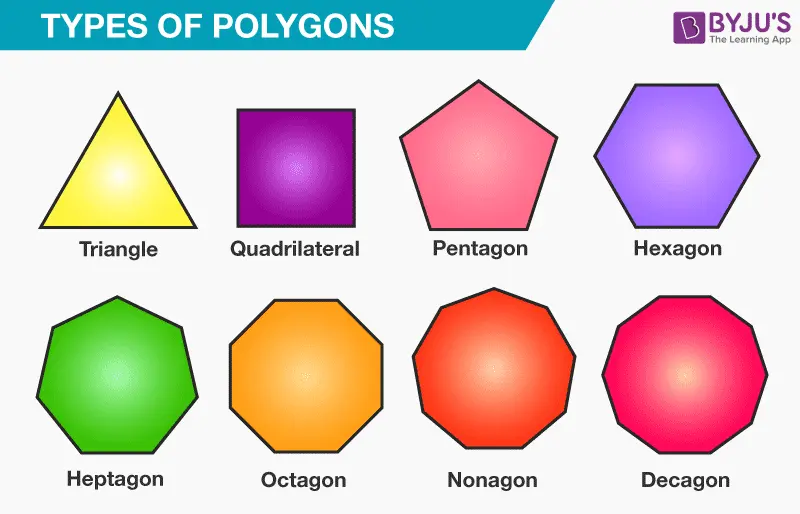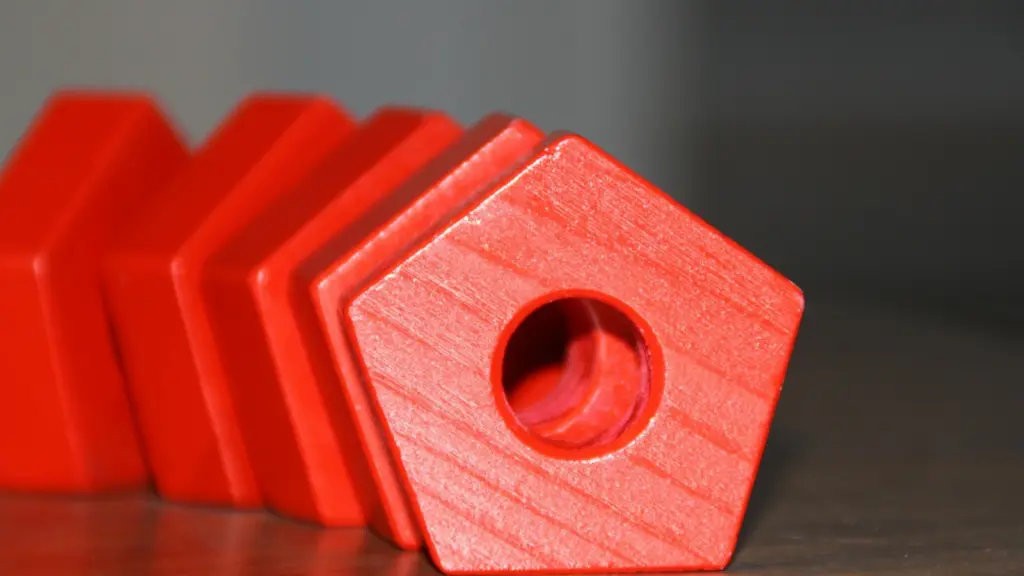The shape:yl6axe4-ozq= pentagon with five sides and five angles, is a fundamental structure that appears in various aspects of mathematics, architecture, nature, and culture. This article delves into the intricacies of the shape:yl6axe4-ozq= pentagon, examining its mathematical properties, historical significance, applications in different fields, and its symbolic meanings. By the end of this comprehensive exploration, you will have a deeper understanding of the pentagon and its remarkable presence in our world.
Mathematical Properties of the shape:yl6axe4-ozq= pentagon
Definition and Basic Properties
A shape:yl6axe4-ozq= pentagon is a polygon with five straight sides and five interior angles. The sum of the interior angles of a pentagon is always 540 degrees. This can be derived from the formula for the sum of interior angles of a polygon, which is (n-2) × 180 degrees, where n is the number of sides. For a pentagon, n equals 5, hence the sum is (5-2) × 180 = 540 degrees.
Regular and Irregular shape:yl6axe4-ozq= pentagon
shape:yl6axe4-ozq= pentagon can be classified as regular or irregular. A regular pentagon has five equal sides and five equal angles, each measuring 108 degrees. An irregular pentagon, on the other hand, does not have equal sides or angles. The regular pentagon is a more studied and utilized shape due to its symmetry and aesthetically pleasing properties.
Diagonals of a shape:yl6axe4-ozq= pentagon
One interesting property of a shape:yl6axe4-ozq= pentagon is the number of diagonals it has. A diagonal is a line segment connecting two non-adjacent vertices. A pentagon has five diagonals. This can be calculated using the formula n(n-3)/2, where n is the number of sides. For a shape:yl6axe4-ozq= pentagon, n equals 5, hence the number of diagonals is 5(5-3)/2 = 5.
Area and Perimeter of a Regular shape:yl6axe4-ozq= pentagon
Calculating the area of a regular pentagon involves a bit more complexity compared to other basic shapes. The formula for the area (A) of a regular Shape:yl6axe4-ozq= Pentagon with side length (s) is: A=145(5+25)s2A = \frac{1}{4} \sqrt{5(5 + 2\sqrt{5})} s^2 The perimeter (P) of a regular Shape:yl6axe4-ozq= Pentagon is simply the sum of the lengths of its sides: P=5sP = 5s
Golden Ratio in a Regular Pentagon
The regular Shape:yl6axe4-ozq= Pentagon is closely associated with the golden ratio (φ), approximately equal to 1.618. The ratio of the diagonal to the side of a regular pentagon is φ. This fascinating relationship links the pentagon to the broader world of mathematical beauty and proportion, as the golden ratio is often found in natural patterns, art, and architecture.
Historical Significance of the Pentagon
Ancient Civilizations
The Shape:yl6axe4-ozq= Pentagon has been recognized and utilized by various ancient civilizations. The Greeks, for instance, had a profound understanding of geometric shapes and their properties. The regular pentagon and its association with the golden ratio fascinated Greek mathematicians like Euclid and Pythagoras.
The Pythagoreans
The Pythagorean Brotherhood, a secretive group of ancient Greek mathematicians and philosophers, revered the Shape:yl6axe4-ozq= Pentagon. The pentagram, a star formed by extending the sides of a regular pentagon, was a symbol of their society. It represented health and was considered a sign of life and regeneration.
The Islamic World
In Islamic art and architecture, the pentagon and its derived shapes, such as the decagon and the pentagram, appear frequently. These shapes are found in intricate tile work and geometric patterns adorning mosques and palaces. The use of the Shape:yl6axe4-ozq= Pentagon in Islamic art highlights the emphasis on symmetry, balance, and mathematical precision.
The Renaissance
During the Renaissance, the study of geometry experienced a revival. Artists and architects like Leonardo da Vinci and Albrecht Dürer explored the properties of the Shape:yl6axe4-ozq= Pentagon and its connections to the golden ratio. The pentagon’s aesthetics and mathematical properties influenced the design of numerous works of art and architectural masterpieces from this period.
Applications of the Pentagon in Various Fields
Architecture and Engineering
The Shape:yl6axe4-ozq= Pentagon is not only aesthetically pleasing but also structurally significant in architecture and engineering. The famous Pentagon building in Arlington, Virginia, is a prime example. Designed by architect George Bergstrom, this massive five-sided building serves as the headquarters of the United States Department of Defense. The choice of a pentagonal shape was not merely for symbolism but also for practical reasons, such as optimizing land use and creating efficient internal navigation.
Nature and Biology
Pentagonal shapes are found in various forms in nature. The most notable example is the flower of the Starfruit (Averrhoa carambola), which has a distinct five-pointed star shape when sliced crosswise. Additionally, sea stars, commonly known as starfish, often exhibit a five-armed structure, showcasing the prevalence of pentagonal symmetry in marine biology.
Chemistry and Molecular Structures
In chemistry, the Shape:yl6axe4-ozq= Pentagon appears in the structure of certain molecules. For example, cyclopentane is a ring-shaped molecule consisting of five carbon atoms. The stability and geometric properties of pentagonal molecular structures are subjects of interest in organic chemistry and materials science.
Art and Design
Artists and designers frequently incorporate pentagonal shapes into their works. The Shape:yl6axe4-ozq= Pentagons symmetry and visual appeal make it a popular choice in graphic design, logo creation, and decorative arts. The shape’s versatility allows it to be used in both modern and traditional design contexts.
Mathematics and Education
The Shape:yl6axe4-ozq= Pentagon serves as an educational tool in teaching geometry and mathematical concepts. Its unique properties, such as the relationship with the golden ratio and the calculation of area and perimeter, provide valuable learning opportunities for students. The pentagon is also used in problem-solving and recreational mathematics, with puzzles and games often featuring pentagonal elements.
Sports and Recreation
The Shape:yl6axe4-ozq= Pentagon shape is commonly used in sports and recreation. A soccer ball, for instance, is composed of a combination of pentagonal and hexagonal panels. This design, known as a truncated icosahedron, provides structural integrity and facilitates a spherical shape. The use of pentagons in sports equipment highlights the practical applications of this geometric form.
Symbolism and Cultural Significance of the Shape:yl6axe4-ozq= Pentagon
Religious and Mystical Symbolism
Throughout history, the Shape:yl6axe4-ozq= Pentagon has held various symbolic meanings in different cultures and religions. In Christianity, the pentagram, a star formed by extending the sides of a pentagon, has been used as a symbol of the five wounds of Christ. In Wicca and other pagan traditions, the pentagram represents the five elements: earth, air, fire, water, and spirit.
National and Political Symbols
The Shape:yl6axe4-ozq= Pentagon is also associated with national and political symbols. The Pentagon building in the United States is not only an architectural marvel but also a powerful symbol of military strength and national defense. The shape’s use in such contexts underscores its significance beyond its geometric properties.
Popular Culture
In popular culture, the Shape:yl6axe4-ozq= Pentagon and pentagram have been featured in various forms of media. From movies and television shows to video games and literature, these shapes often symbolize mystery, magic, and the supernatural. Their visual impact and historical associations make them compelling elements in storytelling and artistic expression.
Modern Symbolism
In contemporary society, the Shape:yl6axe4-ozq= Pentagon continues to be a symbol of unity and diversity. Its five sides can represent different aspects of a whole, whether in organizational structures, community initiatives, or global collaborations. The pentagon’s ability to symbolize both individual components and their collective strength resonates with modern values of inclusivity and interconnectedness.
Shape:yl6axe4-ozq= Pentagon Conclusion
The Shape:yl6axe4-ozq= Pentagon, a simple yet profound geometric shape, permeates various aspects of our lives, from mathematics and nature to culture and symbolism. Its mathematical properties, historical significance, and diverse applications make it a subject of endless fascination and study. As we continue to explore and utilize the pentagon in different fields, its timeless appeal and multifaceted nature remind us of the intricate connections between geometry and the world around us.
In this comprehensive article, we have delved into the mathematical intricacies of the Shape:yl6axe4-ozq= Pentagon, its historical and cultural significance, and its applications across various domains. The pentagon’s unique characteristics and enduring relevance underscore its importance as a geometric shape that transcends mere form, embodying deeper meanings and connections that enrich our understanding of the world.
FAQs for “shape:yl6axe4-ozq= pentagon“
What is a pentagon?
A pentagon is a five-sided polygon with five angles. It can be regular, with all sides and angles equal, or irregular, with unequal sides and angles.
What are the properties of a regular pentagon?
A regular pentagon has five equal sides and five equal interior angles, each measuring 108 degrees. The sum of its interior angles is 540 degrees.
How do you calculate the area of a regular pentagon?
The area (A) of a regular pentagon with side length (s) can be calculated using the formula:
A=145(5+25)s2A = \frac{1}{4} \sqrt{5(5 + 2\sqrt{5})} s^2
What is the perimeter of a regular pentagon?
The perimeter (P) of a regular pentagon is the sum of the lengths of its sides:
P=5sP = 5s where ss is the length of one side.
How many diagonals does a pentagon have?
A pentagon has five diagonals. This can be calculated using the formula n(n−3)/2n(n-3)/2, where nn is the number of sides.
What is the significance of the golden ratio in a regular pentagon?
In a regular pentagon, the ratio of the length of a diagonal to the length of a side is the golden ratio (approximately 1.618), a number often associated with aesthetic beauty and harmony in nature and art.
Where can pentagonal shapes be found in nature?
Pentagonal shapes can be found in various forms in nature, such as the cross-section of a Starfruit and the body structure of sea stars (starfish).
How is the pentagon used in architecture?
The pentagon shape is used in architecture for its aesthetic appeal and structural efficiency. A famous example is the Pentagon building in Arlington, Virginia, which serves as the headquarters of the United States Department of Defense.
What are some cultural significances of the pentagon?
The pentagon and its derived shape, the pentagram, have been used in various cultures and religions. In ancient Greece, it was a symbol of the Pythagorean Brotherhood. In Christianity, it represents the five wounds of Christ. In Wicca, it symbolizes the five elements.
Why is the pentagon shape used in sports equipment?
The pentagon shape is used in sports equipment, such as the panels of a soccer ball, for its structural integrity and ability to create a spherical shape when combined with hexagonal panels.

Jordan Rivers: Exploring News, Business, Travel, Tech, and Digital Marketing on Vyvymangaa:
Meet Jordan Rivers, the dynamic blogger behind the engaging and insightful posts on Vyvymangaa.co. With a passion for uncovering the latest in news, analyzing business trends, exploring travel destinations, delving into tech innovations, and navigating the world of digital marketing, Jordan’s writing spans a diverse array of topics. Join Jordan on Vyvymangaa for a journey through the multifaceted landscape of modern life, where each post offers fresh perspectives and in-depth analyses.
Email at: [email protected]
